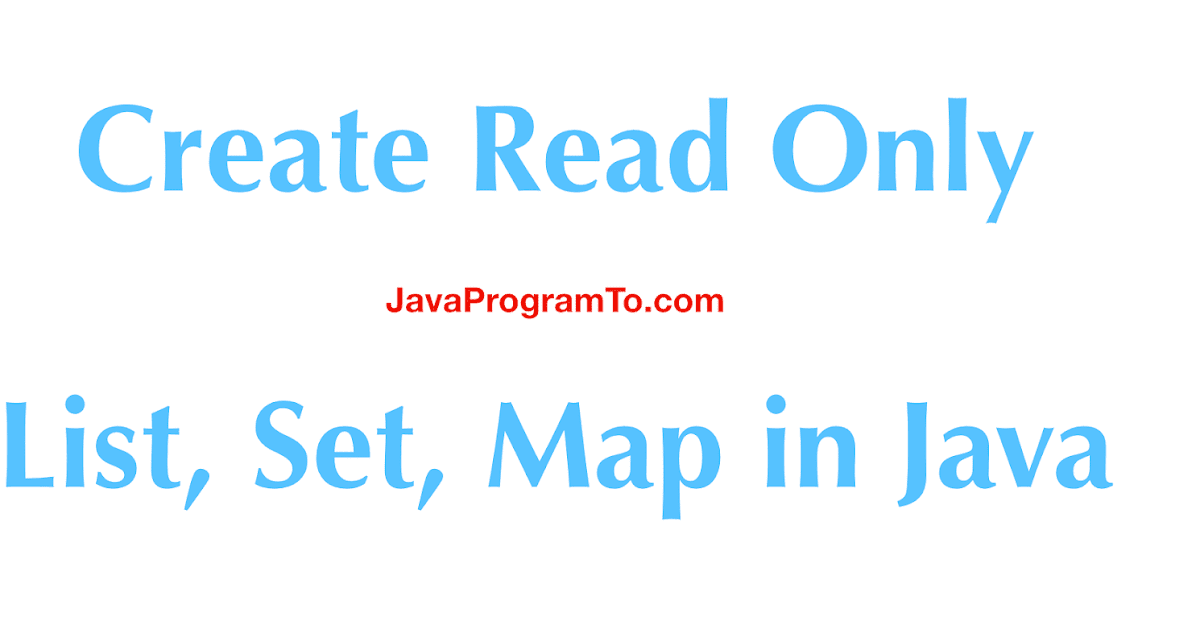Java Set Vs List
When it comes to choosing between Java sets and lists, developers often find themselves in a dilemma. Both data structures have their own unique characteristics and are suited for different use cases. In this article, we will delve into the intricacies of Java sets and lists, comparing their definition, purpose, internal data structure, ordering of elements, uniqueness constraint, performance, and use cases. By the end, you’ll have a clear understanding of when to use sets instead of lists and vice versa.
1. Definition and Purpose of Sets:
In Java, a set is an interface that extends the Collection interface and represents a collection of unique elements. It doesn’t allow duplicate values, ensuring that each element occurs only once within the set. The purpose of a set is to provide a data structure optimized for efficient membership testing.
2. Definition and Purpose of Lists:
On the other hand, a list is also an interface that extends the Collection interface, but unlike sets, it allows duplicate elements. A list maintains the insertion order of elements, enabling easy access to specific elements within the collection. Its purpose is to provide an ordered sequence of elements.
3. Differences in Internal Data Structure:
Sets and lists differ in their internal data structures. Sets use HashSets or TreeSets, which implement hashing and binary search tree algorithms, respectively. These data structures provide efficient search and retrieval operations. Lists, on the other hand, use ArrayLists or LinkedLists, which implement dynamic arrays and linked lists, respectively. ArrayLists are efficient for random access, while LinkedLists are better suited for frequent insertions and deletions.
4. Insertion Order and Ordering of Elements:
One noticeable difference between sets and lists is the ordering of elements. Sets do not guarantee any specific order, as they focus on quick membership testing rather than preserving insertions. Lists, however, maintain the insertion order, allowing sequential access to elements.
5. Duplicate Elements and Uniqueness Constraint:
Another distinction lies in the handling of duplicate elements. Sets enforce the uniqueness constraint, discarding any duplicate values. On the contrary, lists allow duplicates, enabling multiple occurrences of the same element.
6. Performance and Complexity Analysis of Common Operations:
When it comes to performance, sets and lists exhibit varying characteristics. Sets generally provide faster membership testing due to their internal data structures optimized for fast lookup. However, adding or removing elements from a set can be slower when compared to lists. Lists, with their predictable ordering and efficient indexing, excel in random access, making it faster to retrieve elements by index. In terms of complexity, sets have an average complexity of O(1) for membership testing, while lists have an average complexity of O(n) for search operations.
7. Use Cases and Scenarios for Sets:
Sets find their best application in scenarios that require maintaining a collection of unique elements. For example, the validation of unique usernames in a user registration system can be efficiently done using sets. Additionally, storing a list of unique tags or keywords for categorization purposes benefits from sets.
8. Use Cases and Scenarios for Lists:
Lists are suitable when maintaining an ordered collection of elements is crucial. For instance, when handling a playlist, a list ensures that songs are played in a specific order. Lists are also beneficial in scenarios requiring frequent element additions and removals, such as managing a to-do list.
9. When to Use Sets Instead of Lists:
Use sets when the uniqueness of elements is important and order doesn’t matter. Sets are highly efficient in preventing duplicate values and providing constant-time membership testing. If you don’t need to maintain the insertion order or frequently access elements by index, sets should be your go-to choice.
10. When to Use Lists Instead of Sets:
Choose lists when the insertion order and easy element access are crucial. If you need to maintain a sequential order, allow duplicate elements, or frequently retrieve elements by their index, lists offer optimal performance. Additionally, if the order of elements affects the logic of your application, lists provide the necessary functionality.
In conclusion, sets and lists serve different purposes and are optimized for distinct use cases. Sets excel in maintaining uniqueness and efficient membership testing, while lists focus on ordered collections and easy access to elements. By understanding the characteristics, performance, and applications of sets and lists, you can make informed decisions when developing your Java applications.
FAQs:
1. Set vs List Java performance: Which data structure offers better performance?
Sets provide better performance for membership testing, while lists excel in random access operations.
2. List vs Set: What are the main differences?
The main differences lie in the uniqueness constraint, ordering of elements, and internal data structures.
3. What are the differences among map, set, and list?
Maps store key-value pairs, sets store unique elements, and lists allow duplicates and maintain an ordered sequence.
4. Set vs collection Java: How does a set differ from a general collection?
While sets enforce uniqueness, collections allow duplicates and don’t impose any specific order.
5. List of Java: Is a list a built-in type in Java?
In Java, a list is an interface implemented by classes such as ArrayList and LinkedList.
6. For List When working with Java, developers often need to choose between different data structures depending on their specific requirements. Two commonly used data structures in Java are Set and List. Both Set and List have their own advantages and disadvantages, and the choice between them depends on the specific use case. In this article, we will explore the differences between Set and List in Java and discuss when it is better to use one over the other. Set and List are both interfaces in Java’s Collection framework. A Set is an unordered collection of objects that doesn’t allow duplicate elements. On the other hand, a List allows duplicate elements and maintains the insertion order. This fundamental difference between the two opens up various use cases depending on the requirement. 1. Performance: 2. Order: 3. Mutability: 4. Use Cases: FAQs: Q: Can a List contain duplicate elements? Q: Can a Set contain null elements? Q: Which is faster, Set or List? Q: Which is better for memory utilization, Set or List? Q: Can elements in a Set be accessed by index? In conclusion, choosing between Set and List in Java depends on the specific requirements of your use case. Set is more efficient for searching elements and removing duplicates, while List is better for maintaining the order of elements and allowing duplicates. Understanding the differences and specific use cases of each data structure will help you make an informed decision and optimize the performance and functionality of your Java programs. Java programming language offers different data structures to store and organize data efficiently. Two commonly used data structures are Set and List. While both Set and List are used to store collections of elements, they have some fundamental differences in terms of properties and functionalities. In this article, we will explore the differences between Set and List in Java, discussing their characteristics, usage scenarios, and various operations they support. Set in Java: A Set is a collection that does not allow duplicate elements. It ensures that each element is unique within the collection by using the equals() method. In other words, if we try to add an element to a Set that already exists in the Set, it will simply be ignored and not added again. Java provides several implementations of the Set interface, such as HashSet, TreeSet, and LinkedHashSet. The primary feature of a Set is that it does not maintain any particular order of elements. The order of elements can change over time or vary between different runs of the program. This makes Sets suitable when the order or sequence of elements is not important. List in Java: On the other hand, a List is an ordered collection that allows duplicate elements. It maintains the insertion order of elements, and each element is accessible by its index. Java provides several implementations of the List interface, such as ArrayList, LinkedList, and Vector. The key difference between Set and List is that a List allows duplicate elements, whereas a Set does not. This makes Lists the preferred choice when we need to store elements that occur multiple times and maintain their order. Operations and Methods: While both Set and List offer common methods like add(element), remove(element), contains(element), size(), and isEmpty(), there are some additional operations that are specific to each data structure. Set-specific operations include union, intersection, and difference. Union combines elements from two different sets, intersection returns the elements common to both sets, and difference returns the elements in one set that are not present in the other set. List-specific operations include get(index), set(index, element), and indexOf(element). These operations allow us to access elements at a specific index, modify elements at a specific index, and find the index of a given element, respectively. Suitable Use Cases: Here are some scenarios where Set and List are preferred over the other: 1. Use Set when: – You want to eliminate duplicates from a collection. 2. Use List when: – You want to maintain the insertion order of elements. FAQs: Q: Can a Set contain duplicate elements if they consider different positions in memory? Q: How can we maintain the insertion order of elements in a Set? Q: Is it possible to sort a List in Java? Q: What is the difference between a HashSet and a TreeSet? In conclusion, Set and List are both important data structures in Java, designed to suit different requirements based on the uniqueness and order of elements. While Set eliminates duplicates and does not maintain order, List allows duplicates and maintains the insertion order. Understanding these differences and their usage scenarios helps in choosing the appropriate data structure for efficient programming. Keywords searched by users: java set vs list Set vs List Java performance, List vs Set, list, set map trong java, what are differences among map, set and list?, Set vs collection java, List of Java, For List Categories: Top 36 Java Set Vs List See more here: nhanvietluanvan.com Java provides a wide range of data structures to store and manipulate collections of objects. Two popular data structures are Set and List, both of which have their own advantages and performance characteristics. In this article, we will explore the differences between Set and List in terms of performance and when it is best to use each data structure. List: Performance Considerations: 1. ArrayList: 2. LinkedList: 3. Vector: Set: Performance Considerations: 1. HashSet: 2. LinkedHashSet: 3. TreeSet: When to use Set or List? Use List when: Use Set when: FAQs: Q: Which List implementation should I choose for better performance? Q: Is HashSet faster than TreeSet? Q: Can I store duplicate elements in a Set? Q: Is it possible to maintain insertion order in a Set? Q: Are List and Set thread-safe? In conclusion, the choice between Set and List depends on the specific requirements of your application. List is ideal when you need to maintain the order of elements and perform random access, while Set is suitable when uniqueness of elements and efficient querying are necessary. By understanding the performance characteristics and trade-offs of each data structure, you can make informed decisions to optimize the performance of your Java applications. Introduction: When it comes to organizing and managing data, it is essential to choose the right data structure. Two frequently used data structures in programming are lists and sets. While both have their unique features and advantages, understanding the differences between them is crucial to effectively utilize them in various applications. In this article, we will dive deep into the characteristics, usage, and benefits of lists and sets, helping you make informed decisions when handling data. Lists: A list is an ordered collection of elements, often referred to as items or values. Each item in a list is assigned an index based on its position, allowing for easy access and retrieval. Lists can hold duplicate values, making them suitable for situations where repetition is required. This property of lists enables efficient storage and manipulation of data. Additionally, lists can be dynamically resized, allowing for easy insertion and deletion of elements. Sets: A set, on the other hand, is an unordered collection of unique elements, where no duplicate values are allowed. Sets do not possess an inherent ordering, which means the elements cannot be accessed through indexes. Unlike lists, sets do not have utility methods such as append or insert, but they have specialized methods for set operations like union, intersection, and difference. Sets are useful when we need to store a collection of distinct and unrelated values and perform mathematical operations like checking for membership and finding common elements efficiently. Key Differences: 1. Order: 2. Duplication: 3. Operations: 4. Performance: FAQs: Q1. Can a list contain both ordered and unordered elements? Q2. Can sets store mutable objects? Q3. Which data structure is more memory-efficient, list, or set? Q4. Which data structure is faster for searching elements? Q5. Can I convert a list to a set and vice versa? Conclusion: Understanding the differences between lists and sets is crucial to select the appropriate data structure for specific situations. Lists provide ordered storage with the ability to hold duplicate values, making them versatile for various operations. Sets, on the other hand, offer unordered uniqueness, enabling efficient set operations such as membership checks and set intersections. By leveraging the strengths of each data structure, programmers can optimize their applications for better performance and logical organization of data. Java, being a widely used programming language, offers a variety of data structures to store and manage collections of objects efficiently. Three of the most commonly used data structures in Java are List, Set, and Map. Each of these data structures has its unique characteristics and applications. In this article, we will delve into the fundamentals of List, Set, and Map, exploring their features, differences, and use cases. List: A Sequential Collection A List in Java represents an ordered collection of objects, allowing duplicate elements. The order of the elements is determined by the insertion order, which means that the elements are accessed by their index position. Some commonly used implementations of a List in Java are ArrayList and LinkedList. ArrayList is a resizable array-based implementation of the List interface. It provides constant-time access to elements using the index. On the other hand, LinkedList is implemented as a doubly-linked list, offering efficient insertion and deletion of elements, but slower access by index. Usage: If you need fast access to elements and do not require frequent insertions or deletions, ArrayList is usually the preferred choice. However, if you require frequent modifications such as insertion or deletion, LinkedList provides better performance. Set: An Unordered Collection with No Duplicates Unlike List, Set in Java does not allow duplicate elements. It represents a unique collection of objects and does not maintain any specific order. HashSet and TreeSet are commonly used Set implementations in Java. HashSet stores elements in no particular order by using a hash table. It provides constant-time performance for basic operations like add, remove, and contains. TreeSet, on the other hand, is implemented as a self-balancing binary search tree, storing elements in sorted order. The operations on TreeSet have a time complexity of O(log n), making it slower than HashSet but maintaining the elements in a sorted manner. Usage: If you need to perform operations like add, remove, and contains in a collection with no duplicates and do not require a specific order, HashSet is the recommended choice. In cases where you need the elements to be sorted automatically, TreeSet is an optimal option. Map: A Key-Value Pair Collection Map in Java represents a collection of key-value pairs, where each key is unique. It provides a way to store and retrieve elements based on their keys. HashMap and TreeMap are commonly used implementations of Map in Java. HashMap is implemented using a hash table, offering constant-time performance for basic operations like put and get. It does not maintain any specific order of the elements. On the other hand, TreeMap is implemented as a red-black tree, ensuring that the elements are sorted by their keys. The operations on TreeMap have a time complexity of O(log n), making it slower than HashMap but preserving the sorted order of the elements. Usage: If you need a key-value collection with no specific order requirements and constant-time performance for basic operations, HashMap is the preferred choice. If you require the elements to be sorted by their keys, TreeMap should be used. FAQs: 1. Can we have duplicate elements in a Set? 2. Do List and Set guarantee the same order of elements? 3. Can we iterate over a Map? 4. Which data structure should be used if performance is a concern? In conclusion, Java provides versatile data structures like List, Set, and Map to store and manage collections efficiently. List allows duplicates and maintains insertion order, Set ensures uniqueness of elements with no specific order, and Map associates keys with values. Choosing the appropriate data structure depends on your specific requirements, such as order, duplicates, or performance. Understanding the characteristics and use cases of List, Set, and Map empowers Java developers to design efficient and effective solutions catering to their application needs. Article link: java set vs list. Learn more about the topic java set vs list. See more: https://nhanvietluanvan.com/luat-hoc/Set And Hashset In Java – Full Tutorial
Is Set Better Than List Java?
One of the key factors to consider when choosing between Set and List is performance. Generally, Sets are faster than Lists when it comes to searching for elements. Since Sets do not allow duplicates, they use hashing techniques such as HashSet or TreeSet, which provide O(1) time complexity for searching elements. On the other hand, Lists have to traverse all elements to find a specific element, resulting in O(n) time complexity for search operations. Thus, if you expect frequent search operations in your use case, using Set might be more efficient.
Order is another important consideration. Lists maintain the order of elements as they are inserted. This allows easy access to elements by their index using methods like list.get(index). If your use case requires maintaining the order of elements, then List would be a better choice than Set. On the other hand, Sets do not maintain any particular order. Instead, they use the hashCode() and equals() methods to determine duplicate elements. If maintaining order is not important and duplicate elements need to be avoided, Set is the way to go.
Both Set and List are mutable, meaning that elements can be added, removed, or modified after the data structure’s creation. However, there is one key difference in mutability. Sets do not allow duplicate elements, which means attempting to add a duplicate element will have no effect. Lists, on the other hand, allow duplicates and preserve the order of insertion. So, if you require a data structure that allows duplicate elements, List would be a better choice.
Sets are commonly used when there is a need to perform operations like union, intersection, and difference on collections. The unsorted nature of Sets makes these operations easier to implement and more efficient. Additionally, Sets are suitable for scenarios where uniqueness matters, such as removing duplicate elements from a collection. On the other hand, Lists are better suited when maintaining the order of elements is a requirement, such as when implementing a queue or a stack.
A: Yes, a List can contain duplicate elements. It maintains the order of insertion and allows multiple occurrences of the same object.
A: Yes, a Set can contain one null element. However, in HashSet, only one null element is allowed, while in TreeSet, null elements are not allowed.
A: Generally, Set is faster for search operations since it uses hashing techniques. On the other hand, Lists have O(1) time complexity for accessing elements by index.
A: Sets usually consume more memory than Lists due to hashing and maintaining uniqueness. However, the difference in memory utilization is negligible for most use cases.
A: No, Sets do not guarantee a specific order, so accessing elements by index is not possible. Lists, on the other hand, allow accessing elements by index.What Is The Difference Between Set And List In Java?
– The order of elements does not matter.
– You need to perform set-specific operations like union, intersection, and difference.
– Duplicate elements need to be retained.
– You need to access or modify elements by index.
A: No, Set does not allow duplicate elements even if they consider different positions in memory. The uniqueness of elements in a Set is determined by the equals() method.
A: By default, Set does not maintain the insertion order of elements. However, you can use LinkedHashSet, which is an implementation of Set, to preserve the insertion order.
A: Yes, it is possible to sort a List using the sort() method provided by the Collections class in Java. The elements of the List should implement the Comparable interface or custom Comparator can be used for sorting.
A: HashSet is an implementation of Set that does not maintain any particular order of elements. On the other hand, TreeSet is an implementation of Set that maintains the elements in sorted order, either natural order or custom order using a Comparator.Set Vs List Java Performance
A List is an ordered collection of elements where each element has an index associated with it. This means that elements in a List can be accessed based on their position. Java provides several List implementations such as ArrayList, LinkedList, and Vector. Each implementation has its own performance trade-offs.
When it comes to performance, the choice of List implementation is crucial. Let’s take a look at the performance characteristics of different List implementations:
ArrayList is the most commonly used List implementation. It internally uses an array to store elements. Adding or removing elements at the end of the list is efficient, as it requires only resizing the underlying array. However, adding or removing elements at the beginning or middle of the list can be expensive, as it requires shifting elements to maintain the order.
LinkedList is implemented as a doubly-linked list of nodes. Adding or removing elements at any position is efficient, as it only requires updating the references of adjacent nodes. However, accessing elements by index is slower than ArrayList, as it requires traversing the list from the head or tail.
Vector is similar to ArrayList, but it is synchronized, making it thread-safe. This synchronization comes at a cost, making Vector slower than ArrayList for single-threaded applications. Using Vector only makes sense when thread safety is a requirement.
A Set is an unordered collection of unique elements. Java provides several Set implementations such as HashSet, LinkedHashSet, and TreeSet. Each implementation has its own features and performance characteristics.
The performance of Set implementations is largely influenced by their underlying data structure and whether ordering is required. Let’s discuss the performance characteristics of different Set implementations:
HashSet is the most commonly used Set implementation. It uses a hash table to store elements. Adding or removing elements is efficient, as it utilizes the hash function to quickly locate the appropriate bucket. However, there is no guarantee on the order of elements, and iterating over a HashSet may yield elements in a different order than insertion order.
LinkedHashSet extends HashSet and maintains a doubly-linked list to preserve the order of insertion. This makes it slightly slower than HashSet for adding or removing elements but provides iteration in insertion order.
TreeSet implements a self-balancing binary search tree (Red-Black Tree) to store elements in a sorted order. Adding or removing elements requires maintaining the tree structure, making TreeSet slower than HashSet or LinkedHashSet. However, it offers efficient querying and traversal in sorted order.
Now that we have covered the performance characteristics of Set and List, let’s discuss when it is best to use each data structure.
1. Preservation of insertion order and accessing elements by index is important.
2. Random access (accessing elements by index) is required.
3. Elements need to be added or removed at both ends (beginning and end) of the list.
1. Ensuring uniqueness of elements is the primary concern.
2. Order of insertion is not important.
3. Querying existence of an element is frequently required.
A: If you frequently add or remove elements at the end of the list, ArrayList provides better performance. If you require frequent adding or removing elements at any position, LinkedList is a better choice.
A: HashSet is generally faster than TreeSet for adding or removing elements, as it has constant time complexity. TreeSet is slower due to the need to maintain the sorted order. However, TreeSet offers efficient querying and traversal in sorted order.
A: No, Set implementations do not allow duplicate elements. If you attempt to add a duplicate element, it will be ignored.
A: Yes, you can use LinkedHashSet to preserve the order of insertion and still benefit from O(1) time complexity for adding or removing elements.
A: Most List and Set implementations in Java are not inherently thread-safe. However, you can make them thread-safe by using synchronized wrappers or utilizing concurrent versions like CopyOnWriteArrayList or ConcurrentHashMap.List Vs Set
The significant distinction between lists and sets lies in their ordering. Lists maintain the order of elements as they are inserted, allowing for indexing and retrieval based on position. In contrast, sets do not preserve the order of elements and offer no direct indexing capabilities.
Lists can hold duplicate values, meaning multiple occurrences of the same element can exist in a list. Sets, however, only allow unique elements. Any attempt to add a duplicate element to a set will be automatically rejected. This property of sets helps in efficiently maintaining collections of distinct values.
Lists have a wide range of utility methods such as append, insert, remove, and more, enabling easy manipulations. Sets, on the other hand, provide specialized methods like union, intersection, and difference, allowing for efficient set operations.
The performance characteristics of lists and sets differ based on the operations involved. Lists perform better in situations where the order of elements matters, and frequent element access via indices is required. If duplicate values are needed or if the focus is on insertion and deletion flexibility, lists are a suitable choice. On the other hand, sets excel in scenarios that demand unique and unordered elements, especially when checking for membership or computing set intersections and unions.
A1. No, a list maintains the order of elements consistently. If a specific order is required, a list should be used for all elements.
A2. While sets can technically store mutable objects, it is not recommended. Sets use the hash value of an object to ensure uniqueness. If an object changes its state (hash value), it might lead to unexpected behavior within the set.
A3. It depends on the specific use case. Lists generally require more memory due to their indexing capabilities and allowance for duplicate elements. Sets, being focused on unique values, may consume less memory when duplicate values are not needed.
A4. Sets are generally faster when searching for elements because they employ hashing techniques. Lists, on the other hand, require iterating through the elements to find a match, resulting in slower search operations.
A5. Yes, you can convert a list to a set using the set() function, which automatically removes duplicates. Similarly, you can convert a set to a list by using the list() function, but keep in mind that the order of elements may not be preserved.List, Set Map Trong Java
No, sets in Java do not allow duplicate elements. If you attempt to add a duplicate element, it will simply be ignored.
No, List guarantees the order of elements based on their insertion order, while Set does not maintain any specific order.
Yes, Map provides mechanisms to iterate over the keys, values, or key-value entries using methods like keySet(), values(), and entrySet().
It depends on the specific operations you need to perform. If you require fast access to elements, ArrayList or HashMap are recommended. If you need constant-time performance with no duplicates or a sorted order, HashSet or TreeMap would be more suitable.Images related to the topic java set vs list

Found 7 images related to java set vs list theme



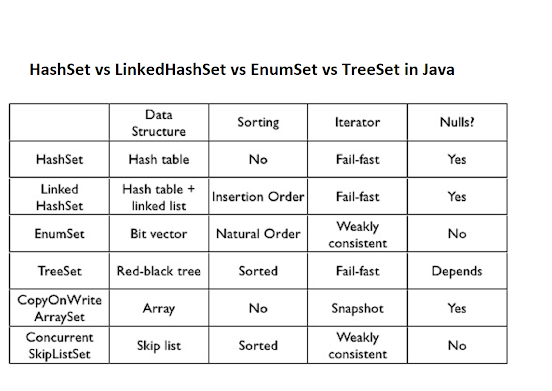

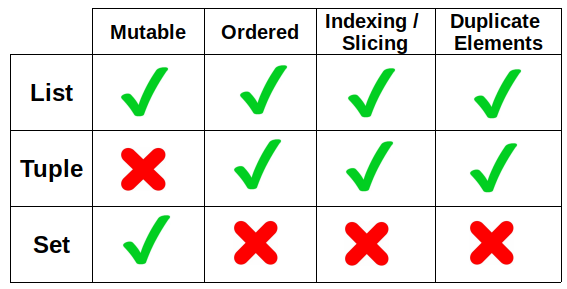

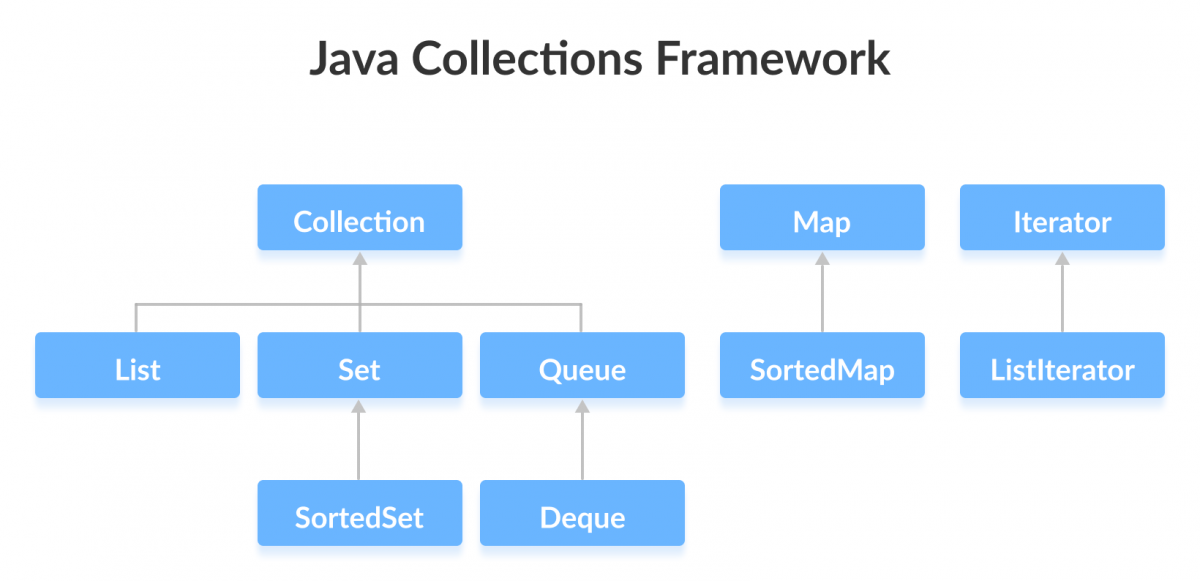
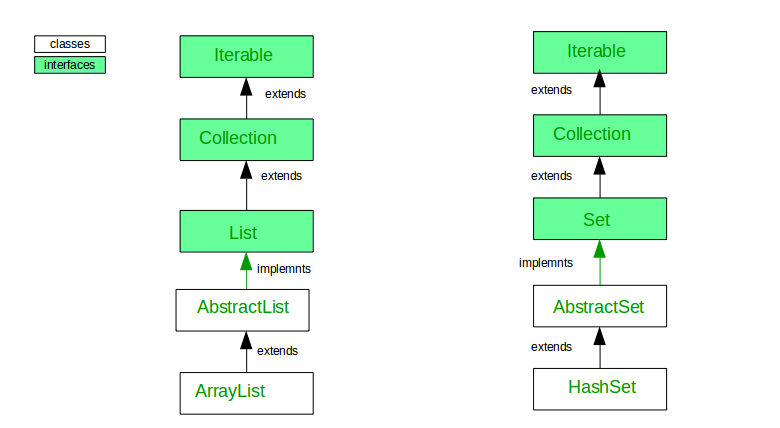

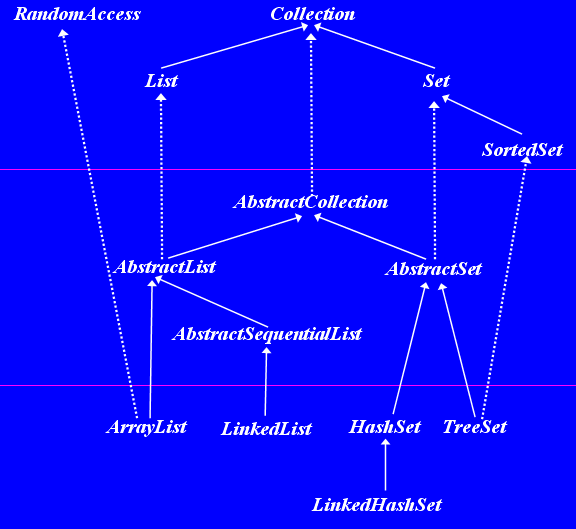

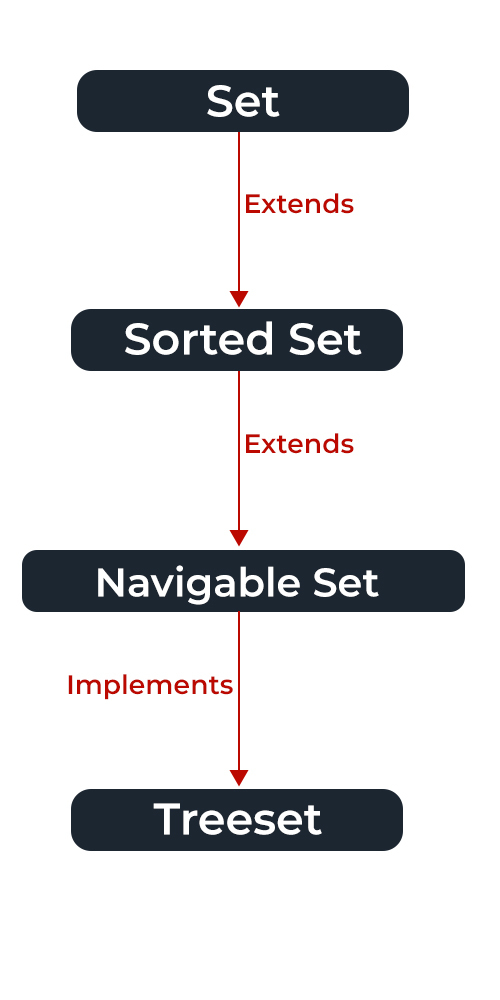
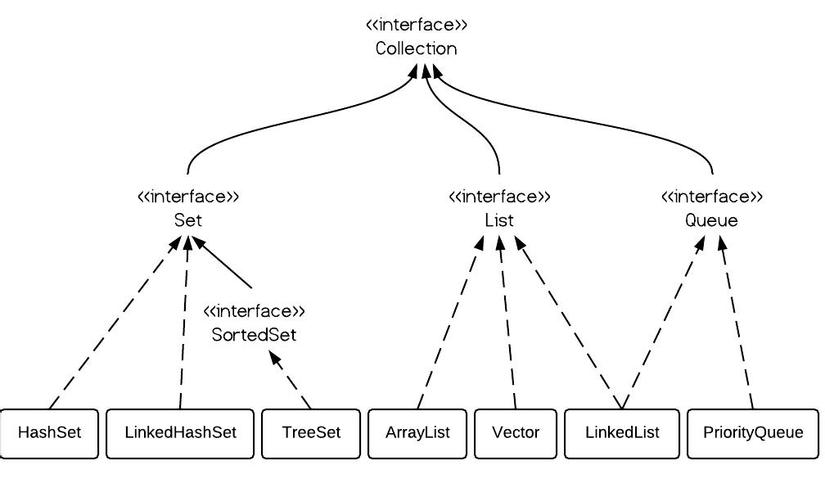

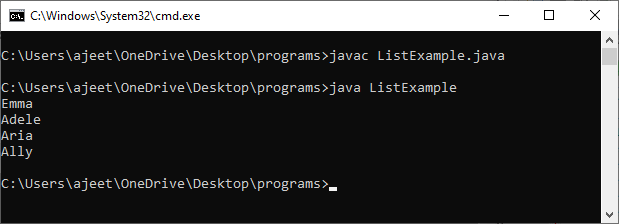

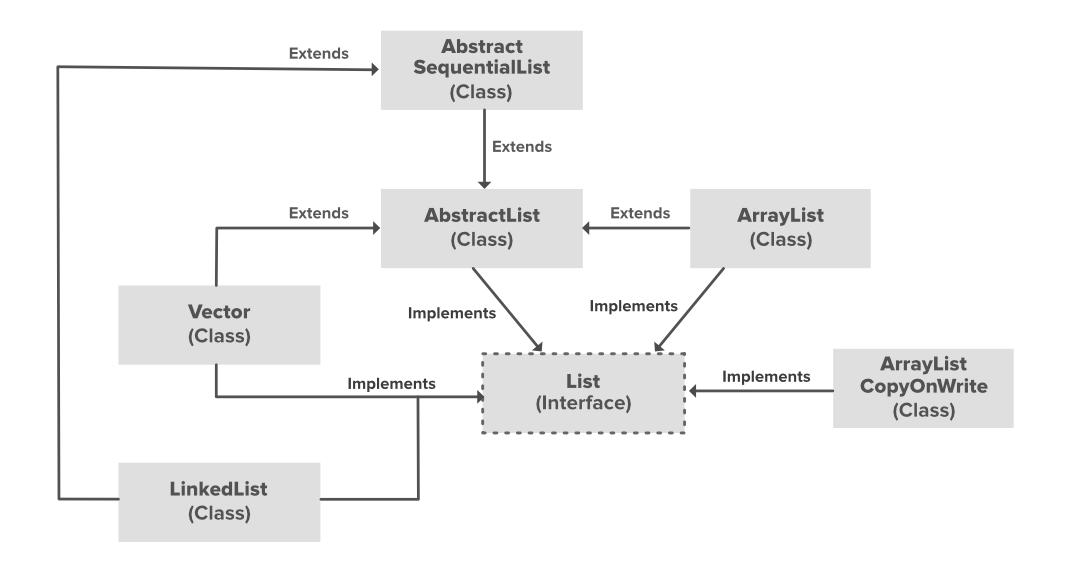
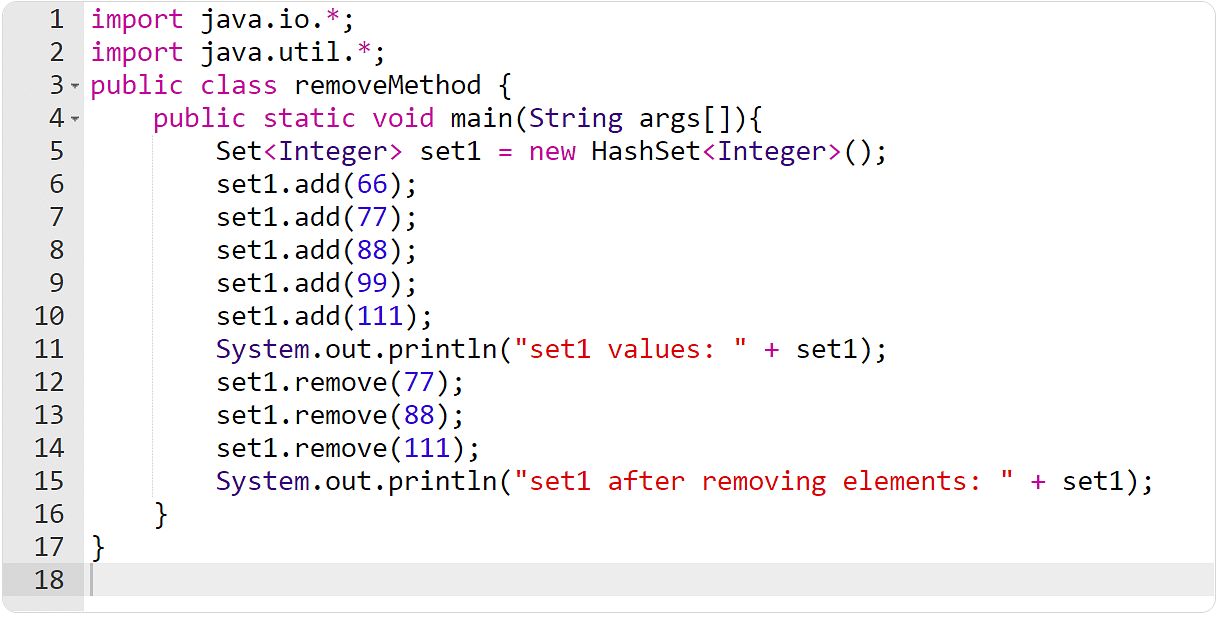



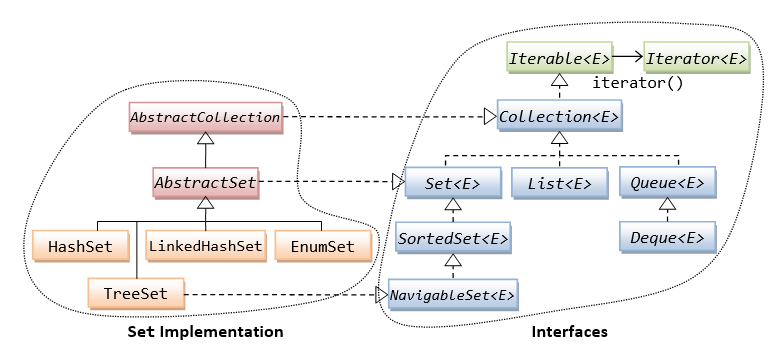

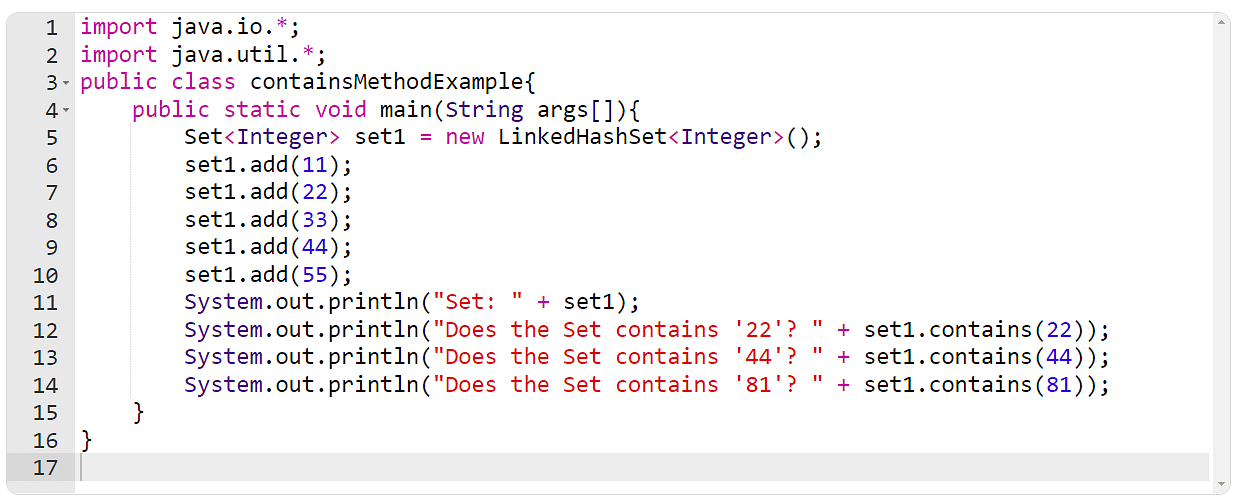
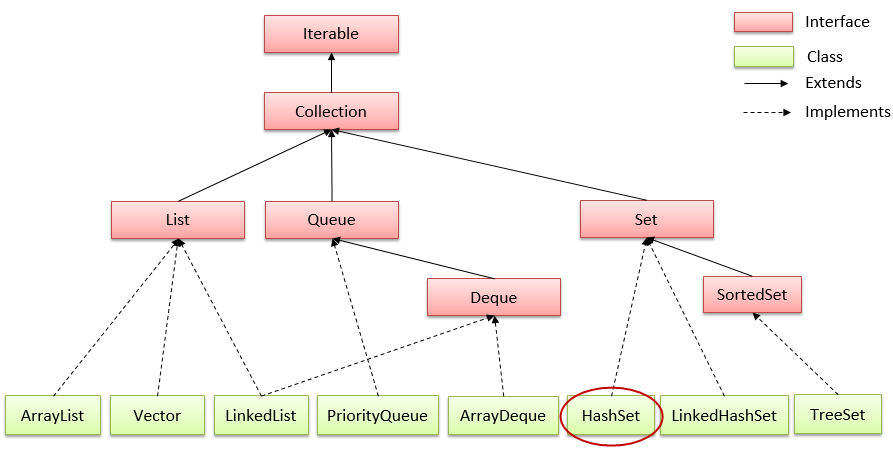




/filters:no_upscale()/news/2023/03/collections-framework-makeover/en/resources/1SequencedCollectionDiagram20220216-1678490434091.png)
